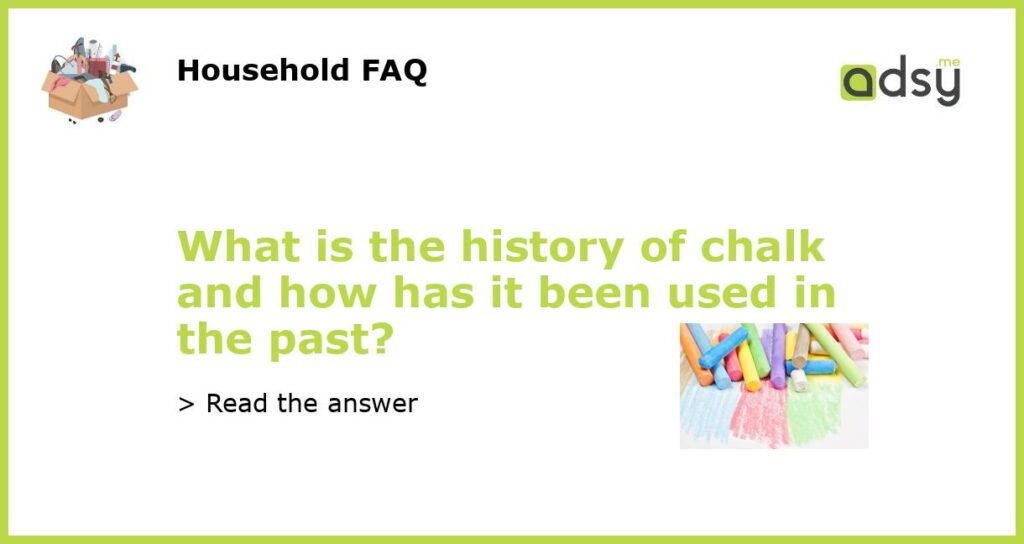The Origins of Chalk and Its Use in Prehistoric Times
Chalk is a soft, white, porous form of limestone that has been used by humans for thousands of years. Its name comes from the Latin word “calx”, meaning limestone. The earliest use of chalk dates back to prehistoric times when it was used by cavemen for cave paintings. They would grind chalk into a powder, mix it with water or animal fat and use it to decorate the walls of their caves.
Chalk in Ancient Civilizations
Chalk use continued into ancient civilizations. The Egyptians used chalk to create hieroglyphics on their temple walls. The Romans used chalk as one of the primary ingredients in their mortar to build their famous architecture. Chalk was also used as a writing instrument, with people writing on slate boards using a chalk stick.
Chalk in Modern Times
Through the Middle Ages and into the Renaissance, chalk continued to be used as a writing instrument. With the invention of the printing press, chalk was used as a tool to make corrections on printed material. Chalkboards were invented in the 19th century, and classrooms around the world started using them as a teaching tool.
Chalk in Sports and Recreation
Today, chalk is commonly used in sports and recreation. Gymnasts, weightlifters and rock climbers all use chalk to improve their grip. Billiards players use chalk to improve the friction between the cue and the ball. Chalk also remains as an integral element of sidewalk art known as “chalk festivals”.
The Ecological Concerns with Chalk Mining
Chalk is typically extracted from quarries and is often used for industrial processes. However, with ecological concerns growing in recent years, there has been a push to find alternatives to chalk extraction. Sustainable alternatives include using recycled chalk, synthetic chalk or opting for markers instead of conventional chalk.






